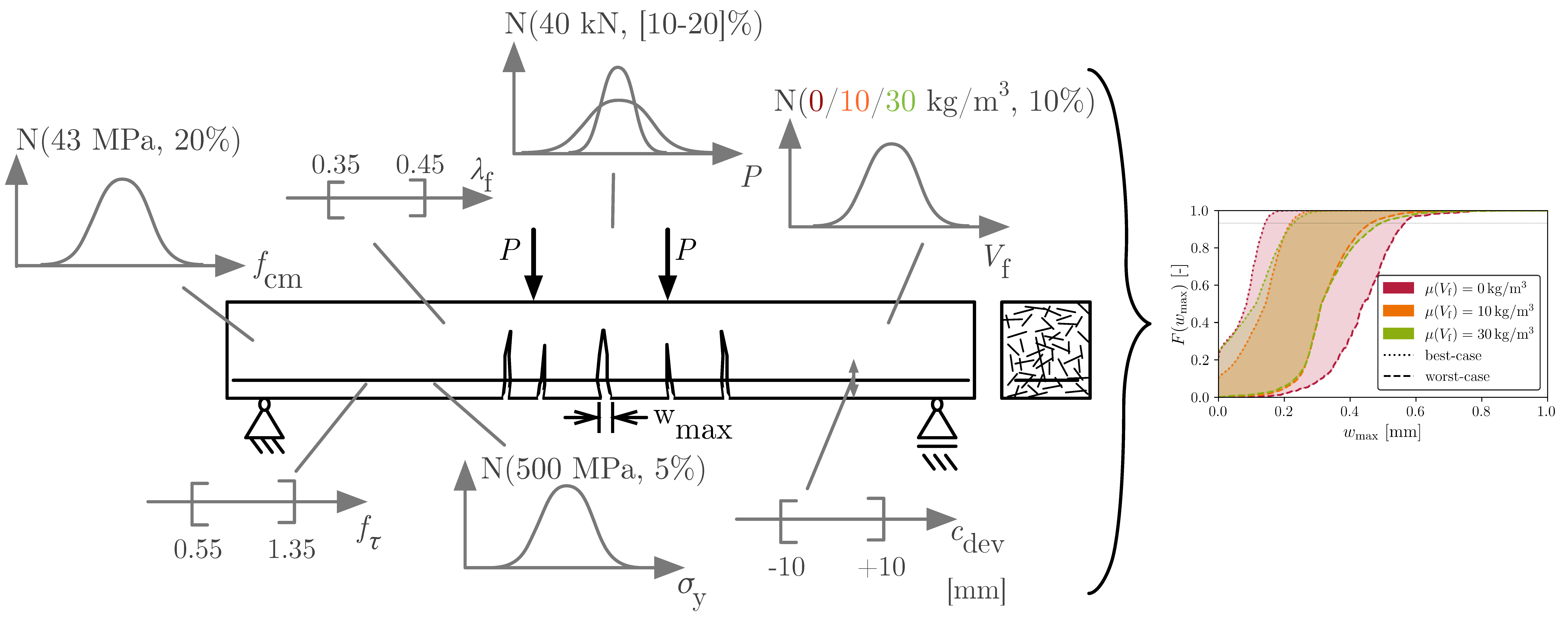Reinforced concrete structures, such as bridges, often exhibit damage before reaching their intended service life. Their durability is governed by closely interacting transport and degradation processes, which are inherently influenced by uncertainties in environmental conditions, material behavior, and modeling assumptions. To achieve longer service lives, durability-oriented models are essential. These models require input data and constitutive equations that, due to measurement limitations and variability, can only be determined with limited precision. Consequently, material heterogeneity, environmental variability and human-induced imprecision must be addressed within a framework of uncertainty.
The research advances the design of reinforced concrete (RC) and steel fiber-reinforced concrete (SFRC) structures by explicitly integrating polymorphic uncertainties - combining aleatory uncertainties, arising from inherent randomness such as material heterogeneity, with epistemic uncertainties, resulting from incomplete knowledge, for example in fiber orientation - into a reliability-based framework. Drawing on semi-probabilistic safety concepts, probabilistic methods are employed to quantify failure probabilities across ultimate and serviceability limit states. Since estimating very low probabilities of failure requires an impractically high number of simulations, and thus renders finite element analysis computationally prohibitive, the approach couples reliability analysis with Transformer-based surrogate modeling for efficient uncertainty quantification.
The current results demonstrate that while steel fibers can partially replace conventional reinforcement, their most significant contribution lies in complementing it. This synergy markedly reduces the sensitivity of crack widths to stochastic loading and enhances long-term durability. Overall, the research emphasizes the importance of integrating uncertainty into structural design and highlights the strategic role of steel fibers in promoting more sustainable and durable concrete structures.
